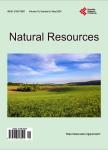Assessing the Impacts of Summer Range on Bathurst Caribou’s Productivity and Abundance since 1985
Assessing the Impacts of Summer Range on Bathurst Caribou’s Productivity and Abundance since 1985作者机构:Canada Centre for Remote Sensing Natural Resources Canada Ottawa Canada Environment and Natural Resources Government of the Northwest Territories Yellowknife Canada School of Natural Resources and Agricultural Sciences University of Alaska Fairbanks USA Tlicho Government Behchoko Canada Wek'èezhìi Renewable Resources Board Yellowknife Canada
出 版 物:《Natural Resources》 (自然资源(英文))
年 卷 期:2014年第5卷第4期
页 面:130-145页
学科分类:1002[医学-临床医学] 100214[医学-肿瘤学] 10[医学]
主 题:Barren Ground Caribou Late-Winter Calf:Cow Ratio Summer Range Leaf Biomass Phenology Remote Sensing
摘 要:Barren ground caribou are one of the most important natural resources for northern aboriginal peoples in Canada, and their responsible management has been identified as a top priority by northern communities and governments. This study is aimed to assess the impacts of summer range forage availability and quality on Bathurst caribou’s productivity and abundance. Despite well documented effects of habitat nutrition on individual animal, few studies have been able to link nutrition and population demographics in a quantitative fashion, probably because caribou productivity and abundance could be potentially affected by many factors (e.g., habitat, harvest, predators, diseases/parasites, extreme weather, climate change, industrial development, and pollution), and yet long-term data for many of these factors are not available. By determining the upper envelope curve between summer range indicators and caribou productivity, this study made such assessment possible. Our results indicate that summer range indicators derived from long-term remote sensing time series and climate records can explain 59% of the variation in late-winter calf:cow ratio during 1985 and 2012. As a measure of caribounet productvitiy, the late-winter calf:cow ratio, together with the mortality rate, in turn determined population dynamics.



